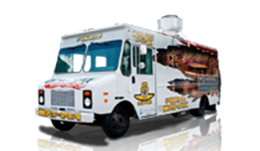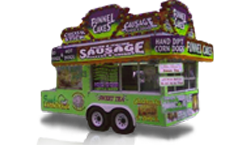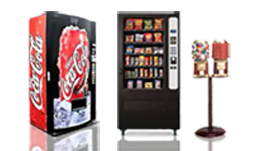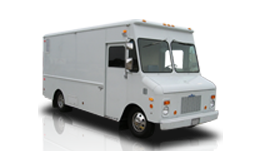The Beginner’s Guide: How Do Food Trucks Get Water?

Food trucks are a revolutionary way to offer gourmet food to American communities. They serve farm-to-table menus, such as fresh salmon that tastes better than frozen fish and newly harvested vegetables that go well with healthy sandwiches and organic salads. Yet, the deliciousness and freshness of these entrees somehow depends on water supply.
Food trucks need water to clean and cook these ingredients. They will need water to wash cooking utensils and serving containers. So, how do food trucks get water? Here’s a beginner’s guide about it!
What’s Inside
Why Do Food Trucks Need Water?
Water plays a vital role in the operation of food trucks. Food trucks need water for two primary reasons:
For washing hands before preparing the food
This is a general rule in preparing food. Hands are deadly carriers of disease. Washing hands during the preparation of food is necessary. This prevents the transmission of unwanted germs. The consequence of the non-observance of this rule is deleterious. In most instances, food poisoning results.
For washing ingredients and dirty utensils
The same goes for ingredients and utensils. They are carriers of bacteria. Fresh produce may have bacteria present in them. Thus, before peeling that vegetable or fruit, wash it first. Utensils can also contain bacteria carried from the previous ingredient it had contact with. Thus, to prevent the spread of bacteria from one food to another, we should wash the utensils we use for cooking.
What are the Requirements in Setting Up A Food Truck Water System?
Food truck operators must ensure the production of clean food. To do so, every food truck must set up a functional water system.
Food truck operators must take into consideration several factors. To prevent wastage of money and time, it is important to do it right the first time around. Nowadays, it’s a relief that the quality of food truck water tanks is the same as those of restaurants.
Before the business operates, water storage tanks must pass the standards laid down by the Food and Drug Administration (FDA). It is also important to take note of the legal requirements within the area of operation.
Generally speaking, there are two FDA requirements for every food truck water tank. First, the material must be strong. Second, the tank must be sanitary and clean. Local state codes commonly require food trucks to have at least:
- 3 gallons of heater water at 120 degrees F
- 5 gallons of water for hand washing
- 15 gallons of water for washing utensils
The water tanks must also be fully insulated and their capacity should be more than half of the capacity of potable water tanks. The water tank should also be installed outside the food truck. Local laws in some US states prohibit the use of aluminum or steel water tanks among food trucks.
How Do Food Trucks Get Water?
Usually, tanks in food trucks use polyethylene plaster resin. This material has a non-corrosive characteristic. It prevents destroying of the tanks resulting in leakage. Kitchen utensils are also made of this same material. When setting up a food truck, one must consider having a tank of this material to prevent future problems. Furthermore, one may opt to use UV protection to prevent the cracking of tanks.
Fresh Water System
There are two ways to deliver fresh water in a food truck. First, a water tank hung in an elevated position delivers water inside the food truck’s sink. Second, a pipe may be set up to deliver fresh water to the food truck’s sink. Either way, it is important to sanitize the equipment.
Water tanks are easily contaminated. Most of the time, they are wet. Wet surfaces attract bacteria. Local health departments lay down the rules in promoting public health. One must consult with the local health department from time to time. This is concerning the existing rules and regulations. Compliance with the rules is very important. Everyone wants a smooth sailing operation of food trucks.
Hot Running Water System
Hot water cleans and sanitizes kitchen utensils. Every food truck must have a good supply of hot water. Water systems in food trucks use a heater to produce hot water. Heaters run with the help of either electricity or gas. When powered by electricity, it may be set up easily. Gas-powered systems are the cheaper option. But, by using gas to power these systems, the environment deteriorates. Gas is also harmful to those inside the food truck. A vent must be set up to prevent the entrapment of harmful gases. For both cases, inspectors need to come and take a look once in a while.
How to Winterize Your Food Truck Water System
Winterization is important for equipment to operate properly. Varying temperature can cause unwanted effects on the food truck water system. To prevent these unwanted effects, observe certain measures. Here are some ways to winterize your food truck water system:
- Clear all water in all your food truck equipment daily. This is important so that nothing freezes within their interior. Freezing of the interior will lead to damage.
- During operation, a space heater close to the water supply should be made handy. This will prevent a bitter supply of cold water.
- Add an antifreeze product to the system. Do this only when there is no operation during times of bitter cold.
- Empty the tanks of potable and gray water overnight. This will provide better results. During nighttime and when the system is inoperative, temperatures drop more. Emptying these tanks will prevent freezing incidents.
The Bottom Line
Quality water systems must be set up at an early stage. Efforts and money should not go to waste. Thus, the water system must follow the local standards. The success of food trucks depends on good water systems.
Need help running your food truck business? Check out our helpful guides:
- 6 Challenges of Being a Food Truck Owner and How to Overcome Them
- 5 Expert Tips to Crush Competitors in the Food Truck Industry
- A Guide to Food Packaging: The Dos and Don’ts
- Running a Food Truck: How to Deal with Angry Customers
And if you are looking for a new food truck unit, here’s a wide range of mobile food trucks for sale. Visit UsedVending.com for exciting updates!







